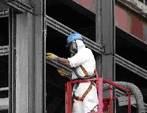Asbestos Information
How to Recognize and Avoid Asbestos
Asbestos is present in many commercial, public, and residential buildings constructed prior to the 1980s. If you live in a home built before then, or are a custodial worker in an older public or commercial building it’s important to know where asbestos might be located and what steps you can take to avoid exposure.
Asbestos: Uses and Dangers
Asbestos is a fibrous mineral that has been used in an estimated three to five thousand different products over the past century. ranging from construction materials to home appliances. The substance was used in construction and ship-building as well as in many manufacturing industries.
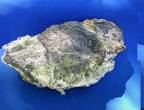 Chrysotile Asbestos
Chrysotile Asbestos
Asbestos was very widely used between the 1940s and 1980s in a variety of construction materials, as well as in household appliances and items such as brake pads and linings. The high tensile strength, high heat resistance, and chemical and physical stability of asbestos made it universally popular for many industrial purposes.
However, many of the mineral’s chemical and physical properties also make it toxic. When viewed under a powerful microscope, asbestos fibers resemble tiny needles, and this structure allows them to become embedded in the body’s tissues if asbestos is inhaled or otherwise ingested. Asbestos is so chemically and physically stable that it’s very difficult for the body to breakdown or expel the fibers.
If the fibers are inhaled they can lodge in lung tissue or in the lining of the lungs. Over time, the fibers cause chronic inflammation that can lead to the development of diseases such as asbestosis and mesothelioma. Asbestosis is a chronic lung condition that develops as inflammation causes scar tissue to develop. Mesothelioma is a rare but very aggressive type of cancer that can develop after exposure to a relatively low dose of asbestos fibers. Pleural mesothelioma is the most common type of this cancer, and affects the lining of lungs.
Where to find Asbestos in Public, Commercial, and Residential Buildings
Asbestos was once so widely used that any building constructed between the 1940s and 1980s is highly likely to contain asbestos. Buildings constructed earlier than the 1940s may contain asbestos if they were repaired or renovated during the years of asbestos use.
The problem, however, is that it’s very difficult—if not impossible—to determine by sight alone whether construction materials contain asbestos.
Exteriors
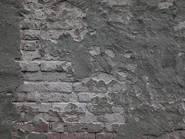 Exterior materials, including roofing and siding shingles, were used until the 1970s. Other materials, including roofing felt and adhesives, are also likely to contain asbestos.
Exterior materials, including roofing and siding shingles, were used until the 1970s. Other materials, including roofing felt and adhesives, are also likely to contain asbestos.
Exterior cement products and mixes often contained asbestos, to increase the thermal insulating capacity of the material
Asbestos shingles were often made from lightweight cement-based products. Both roofing and siding can appear in a range of colors, and may be textured. Shingles are very prone to releasing fibers if broken so treating these materials carefully is important.
Walls, Ceilings, and Floors
 Asbestos was commonly used in a wide range of wall, ceiling, and floor materials, from vinyl floor tiles, to textured paint and plaster wall treatments. Decorative plaster was particularly popular in the 50s, 60s, and 70s.
Asbestos was commonly used in a wide range of wall, ceiling, and floor materials, from vinyl floor tiles, to textured paint and plaster wall treatments. Decorative plaster was particularly popular in the 50s, 60s, and 70s.
Asbestos can also be found in floor tiles and tile adhesives.
Asbestos-containing plaster wall treatments were common between the ‘50s and ‘70s.
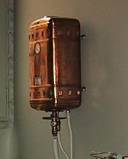 Boilers and furnaces are common asbestos points in residential, commercial, and public buildings.
Boilers and furnaces are common asbestos points in residential, commercial, and public buildings.
Insulation
Asbestos was a very common component of insulation of several different types, particularly in attic and pipe insulation.
Between the 1940s and 1970s, a large amount of vermiculite insulation was contaminated with asbestos. Most was sold under the name, and appears as gray or off-white granules. Zonolite can be found in both walls and floors, scattered between loose floor joists and packed between wall joists.
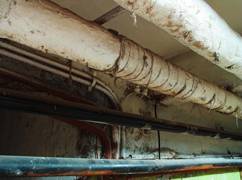 Pipe insulation is also highly likely to contain asbestos. On pipe straight sections this may be in the form of tape, corrugated paper or cardboard. On bended sections, an asbestos-containing plaster or paint was more commonly used. If the world ‘transite’ or ‘transit’ is found stamped on pipes it’s a good indication asbestos is present, but if the stamp is not present it doesn’t automatically mean there’s no asbestos.
Pipe insulation is also highly likely to contain asbestos. On pipe straight sections this may be in the form of tape, corrugated paper or cardboard. On bended sections, an asbestos-containing plaster or paint was more commonly used. If the world ‘transite’ or ‘transit’ is found stamped on pipes it’s a good indication asbestos is present, but if the stamp is not present it doesn’t automatically mean there’s no asbestos.
Adhesives
Asbestos-containing adhesives include glue, mastics, joint compounds, plaster patching compounds, caulk, and tape. Asbestos-containing adhesives were commonly used for any construction purposes in which adhesives were needed.
How to Avoid Asbestos Exposure
Wherever asbestos may be located, avoiding exposure very often comes down simply to avoiding those areas and taking extra precautions if you must work around asbestos. Asbestos-containing materials should not be sanded, scraped, drilled, or otherwise broken unless there is a very good reason for doing so.
If you are working around asbestos, wearing a respirator with a HEPA filter will prevent inhalation of fibers. It’s also important to wear gloves and a protective overall to prevent fibers adhering to your clothes. Any protective clothing you wear should be safely disposed of after use.
The EPA recommends that all asbestos remediation—even small projects—be carried out by licensed asbestos workers. In addition, the law of some states requires that asbestos abatement activities be carried out by professionals. Any area where there is a chance of asbestos exposure occurring should be kept as isolated as possible, particularly when asbestos remediation or removal is carried out. In most states there are also laws that regulate disposal of asbestos-containing waste materials.
